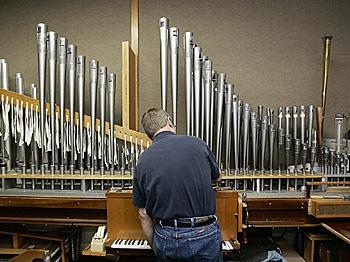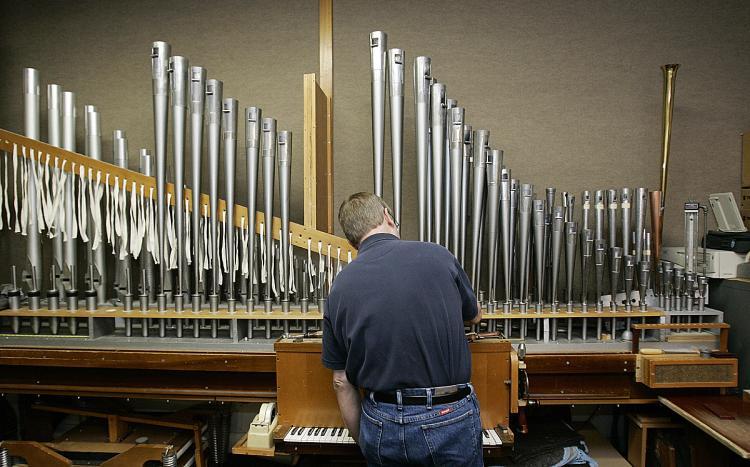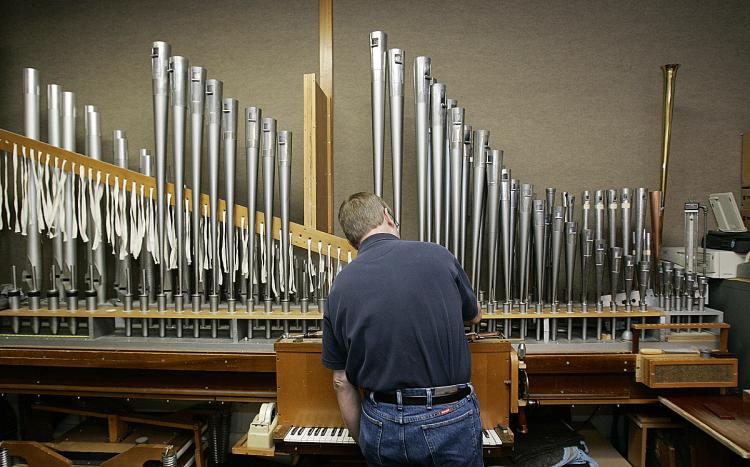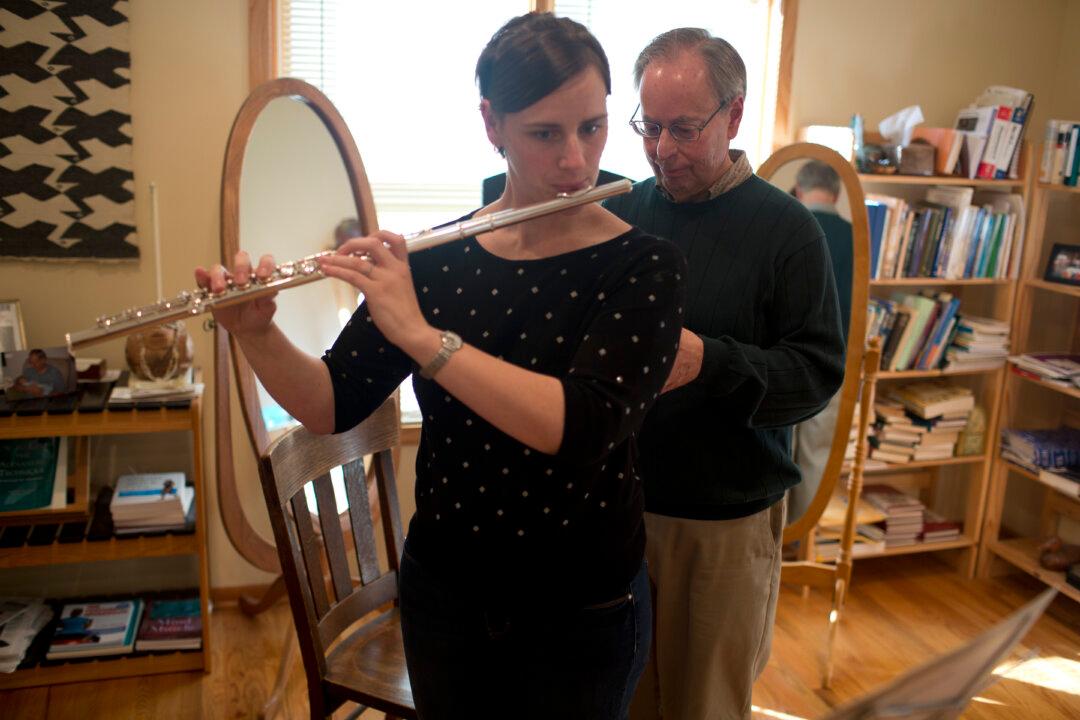Played with both the hands and feet, the pipe organ uses the power of air to produce sound. In comparison to the piano, its better known keyboard cousin, the organ’s sound is the same regardless of how strongly you press a key. Moreover, the sound stops as soon as you remove the pressure.
Unlike the piano, organ acoustics depend on the surroundings, that is, the form and architecture of the hall it is in. When organ halls are built, special consideration must be paid to the building’s acoustic design.
The pipe organ has an illustrious history. The first known representative of the organ family appeared in ancient Greece, in the third century B.C., and was called a hydraulus. The hydraulus was a water organ. It produced music when air, under hydraulic pressure, activated the pipes and was controlled by an elementary keyboard. It was used frequently at the amphitheatres and arenas.
In the Roman Empire, the organ became a symbol of prestige, which continued under the Roman Catholic Church. First, the organs were not very big, but with time and with the growing influence of Catholicism in the Baroque and Renaissance periods, bigger and more sophisticated organs were built. They were able to play more ranks; they could produce sounds of more musical instruments. [caption id=“attachment_77335” align=“alignright” width=“320” caption="MESSIAEN: French composer Olivier Messiaen in 1983, during a press conference for his new creation








